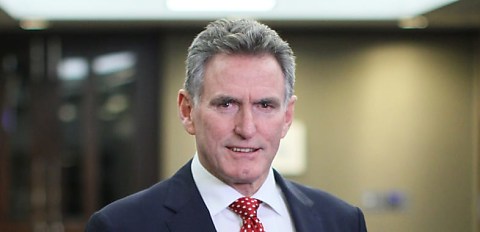The chief executive of National Australia Bank (NAB), Ross McEwan, has flagged that the bank will not be chasing after mortgage growth with the bank expecting mortgage lending growth to drop to between 2.5 per cent and 3 per cent next year.
Speaking at a media briefing following the release of the bank’s full-year results for the financial year ended September 2022 on Wednesday (9 November), Mr McEwan noted that its home loan book (in personal banking) had grown 7.1 per cent in the last financial year (when excluding the impact of the Citi acquisition).
However, he flagged that the changing rate environment, higher competition, and shifting economic environments would reduce growth in future and that the bank would not necessarily chase growth.
He said: “Our indications are that the Australian home lending system will probably drop from about, this year, about 7 per cent growth to probably around about 2.5–3 per cent next year. So we still see growth, but that market is changing quite dramatically and it is turning into a refinance market at the moment as people look to find a better rate as interest rates rise.
“So, you are seeing quite a shift and the margin compression in the home lending market is quite considerable as funding costs become higher, even though interest rates are rising.”
The bank CEO also flagged that “home lending competition” had eaten into its mortgages growth in the financial year 2022 and that the bank will be focusing on building its business lending book as competition intensifies for mortgages.
He told the media: “The margins in this business are getting quite squeezed with higher costs of funding across the board, that doesn’t matter if that’s retail funding or if that’s coming off the wholesale market, and there is very strong competition to hold on to customers. So we are seeing pressure in that market. We’re also having to look very strongly at how much growth we want in this business over the next 12–24 months.
“Our view is: look after our existing customers and maybe a little bit less growth… if that’s below system I’m comfortable with that — you wouldn’t want to do that for long. But I think now is a time when this bank has got other options.”
He suggested that if there was “spare balance sheet”, he’d potentially look at putting it into the business bank, which is “getting very good returns and growing very strongly”.
“So, it’s a matter of: ‘Are you having the luxury of putting your resources where you get the best returns over time?’ But we will look after existing customers and will continue to be very strong in the home lending market,” he added.
The CEO later added that as margins “are getting squeezed pretty heavily”, “you do have to watch that you’re not taking on business that you may regret over the next 12–24 months”.
NAB in solid position as 2023 nears
Overall, the bank’s financial results showed that housing lending increased by $29.1 billion to $389.1 billion (up 8.1 per cent) in the year to September, when including the impact of the Citi consumer business. This was largely driven by an increase of $18.5 billion in personal banking thanks to growth in both owner-occupier and investor lending.
It saw increases of $15.6 billion in variable rate loans and $2.9 billion in fixed rate loans.
There was an increase of $11.6 billion or 13.1 per cent in business and private banking driven by growth in both owner-occupier and investor lending, with increases of $9.9 billion in variable rate loans and $1.7 billion in fixed rate loans.
ubank (which last year subsumed neobank 86 400) also helped drive an increase of $1.1 billion or 12.1 per cent for the banking group.
In non-mortgage lending, the book was up $29.5 billion (or 11 per cent), driven by an increase of $16.1 billion or 13.4 per cent in business and private banking thanks to the “above system growth in business lending”.
Mr McEwan added: “An ongoing focus on strong balance sheet settings has been key to delivering sustainable growth and keeping the bank safe. Capital levels remain above our targets after completing $3.9 billion of on-market share buy-backs over FY22. Collective provision coverage continues to be well above pre COVID-19 levels.
“Maintaining these settings is important during the current economic uncertainty, with higher interest rates and higher inflation likely to challenge some customers. However, strong employment conditions along with substantial household and business savings give us confidence in the resilience of our customers and the broader economy.
“Our strategy is long term, and is not dependent on any particular operating environment or economic conditions. It is centred around an enduring ambition to improve the outcomes for our customers and colleagues.
“We have made good progress over the past two years which positions us well for a changing environment. However, there is more we can do. We will continue to remain focused on the disciplined execution of our strategy to support sustainable growth in earnings and shareholder returns over time.”
[Related: NAB finalises $1.2bn Citi acquisition]
